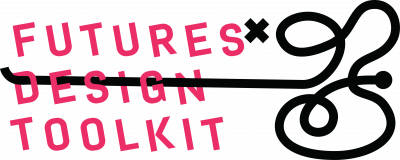
TOOLKIT DEVELOPMENT PROCESS
To formulate the toolkit, we followed a very thorough and extensive process to gather, analyze and collate tools and methods.
The process was an exploration for the current design tools, toolkits and methods’ collections from various sources including literature and web-based search. The aim of this exploratory approach is to position the toolkit within the existing toolkits and to highlight the areas of shortage and gaps in design futures practice. Besides this, identifying the potential tools from other adjacent practices or other close areas that use tools and methods which might be relevant to design futures.
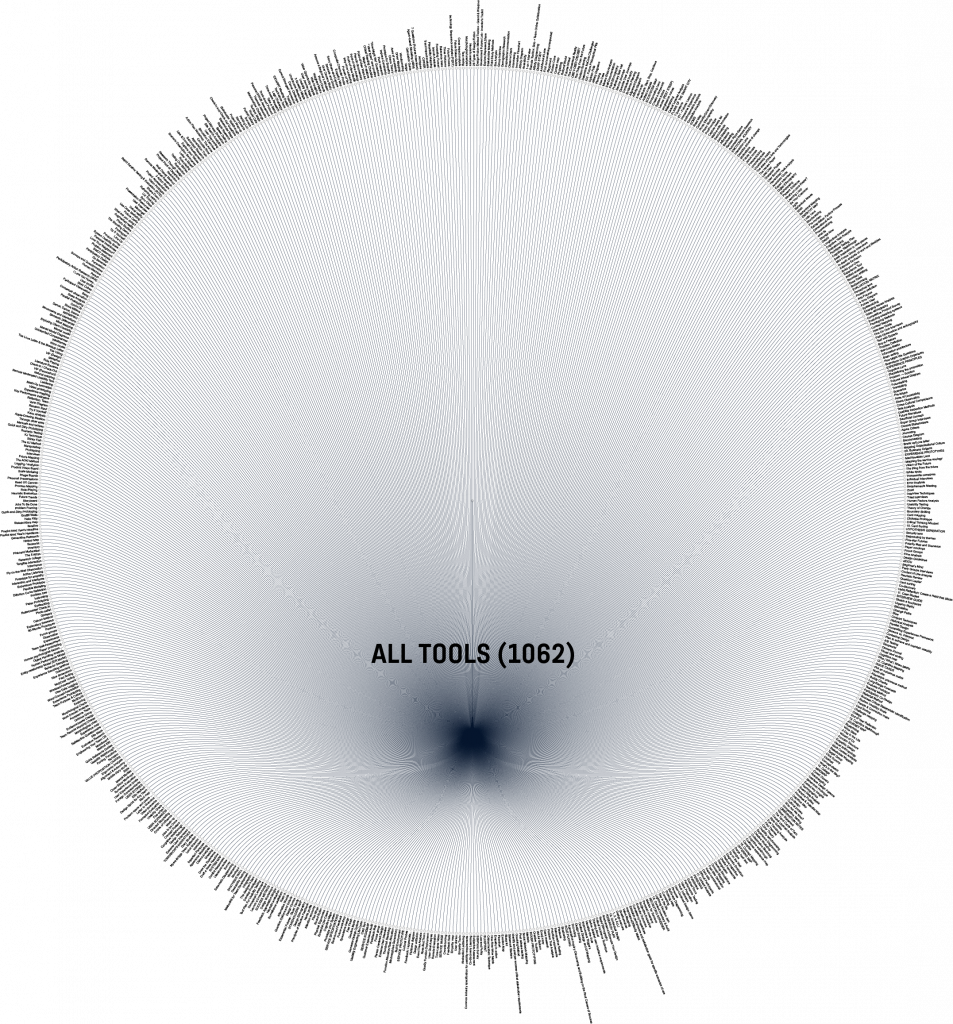
All tools and methods mapped (1062)
The first phase of tools research is concerned with the creation of a contextual map to identify the current toolkits and methods’ collections based on their declared domain of usage. The toolkits and methods collections are collated and gathered in tables in regard to their declared domain of usage (for example: Social Design and Design Futures). We conducted the exploratory research among the established and publicly available design toolkits and methods’ collections in both academia and design practice. The conducted study resulted in a vast collection of tools and methods (1062 gathered in total) that are used in the various areas that are relevant to design. The following phase in research focused on segmenting all the tools by coding them according to typology, purpose and relation to design phases regardless the toolkit or method collection they do belong to. Then we highlighted potential tools from adjacent domains that can be used in conducting design futures besides identifying the gap and areas of potential development. The aim of this step is to generate a space where do we need to develop or create new tools or methods. After eliminating duplicated and ill-defined tools, design tools gathered are (251), futures studies (137), design futures (80) and other adjacent domains to design are (128).
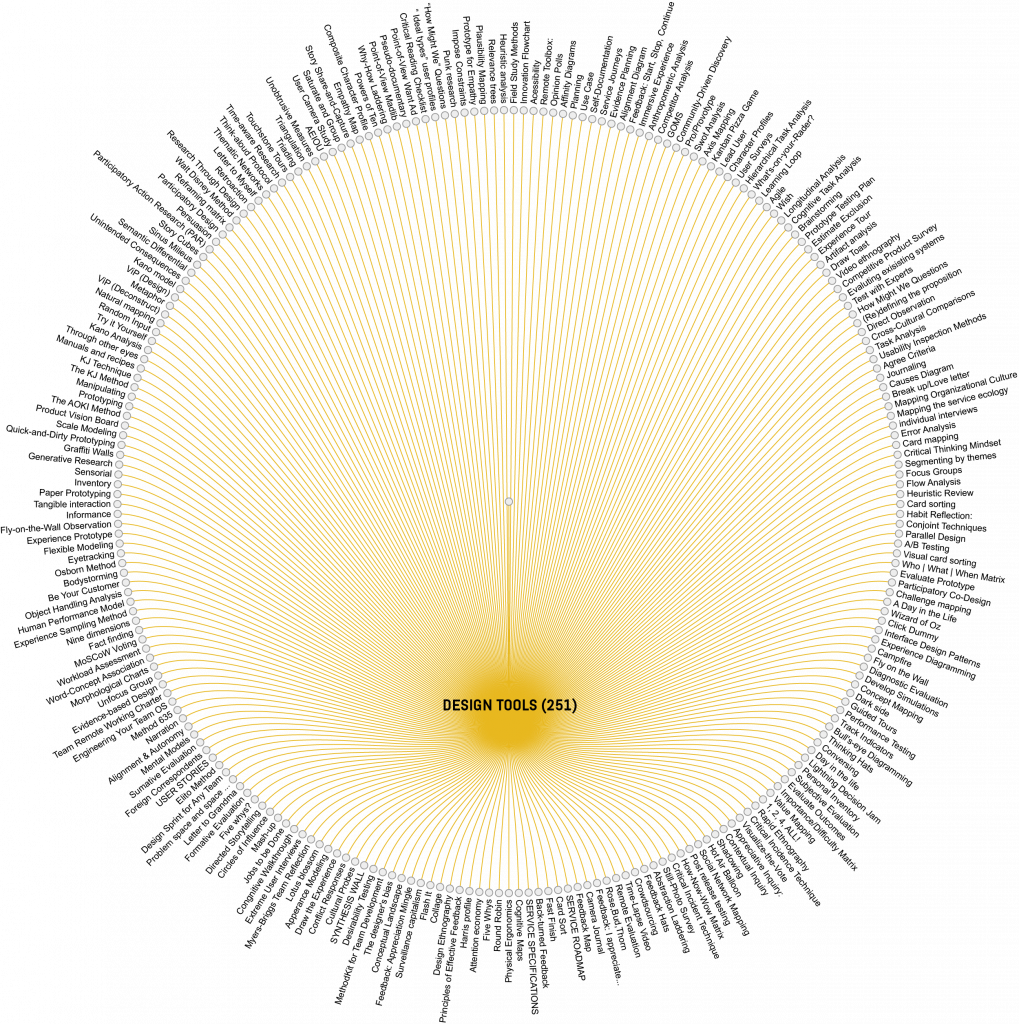
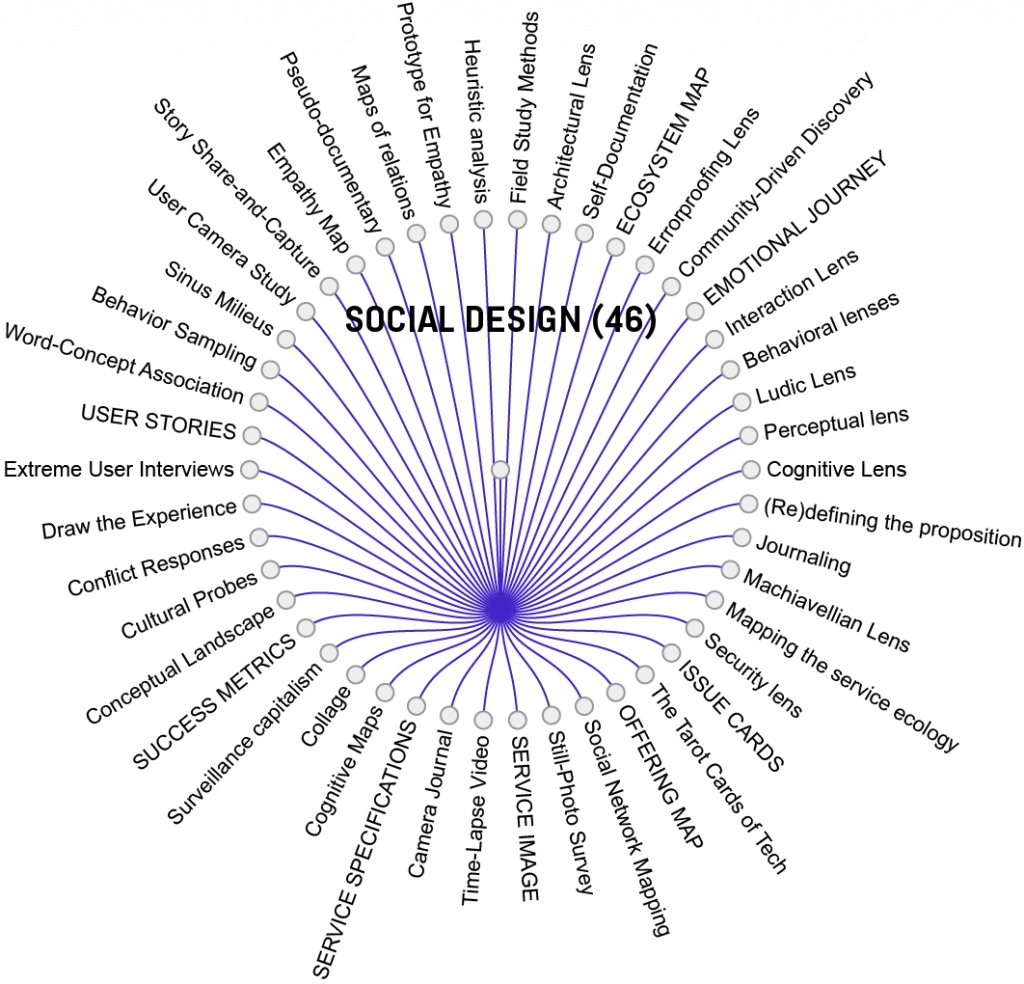
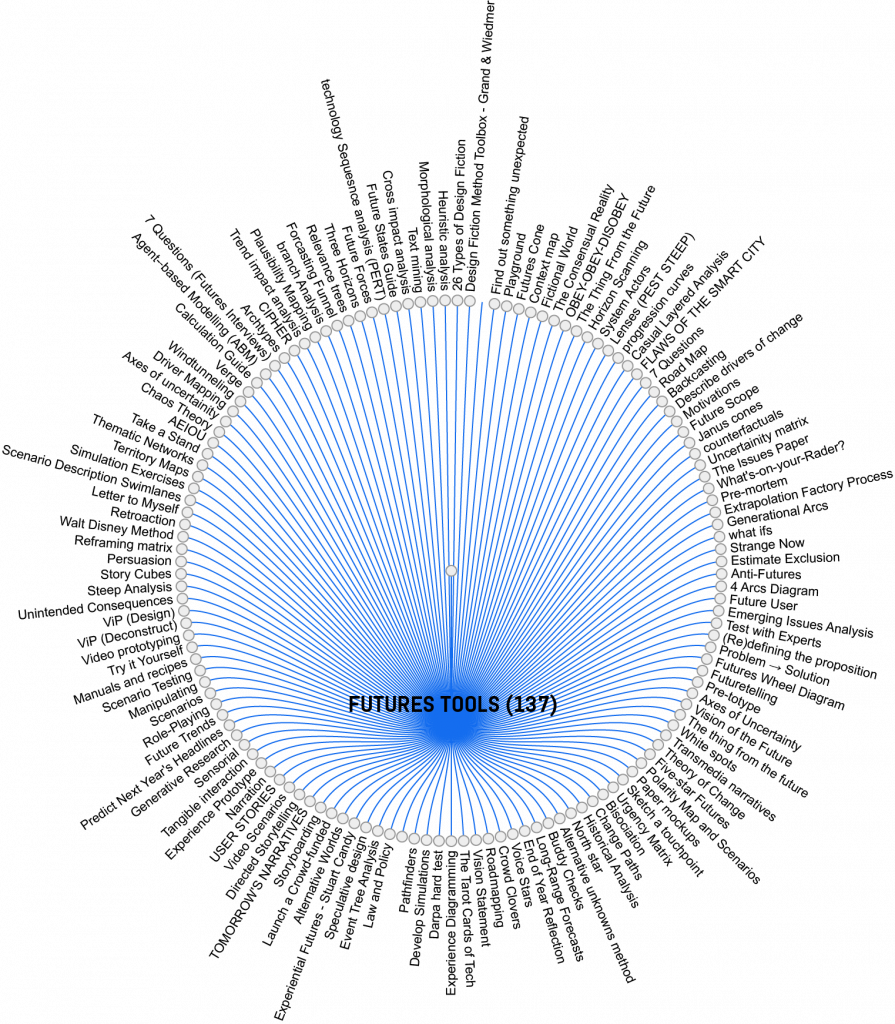
Design Tools, Futures Tools and Social Design Tools
This research also included an analytical activity aiming at understating how tools was categorised in different toolkits and methods’ collections. Moreover, it covered how other toolkits included instructions or guidelines for applying particular tools, to what extent and on what level of complexity. The team also focused on understanding the limitations of tools and considerations about what the creators might have considered while developing them (for example: language barriers, interactivity, context of use and usage limitations).
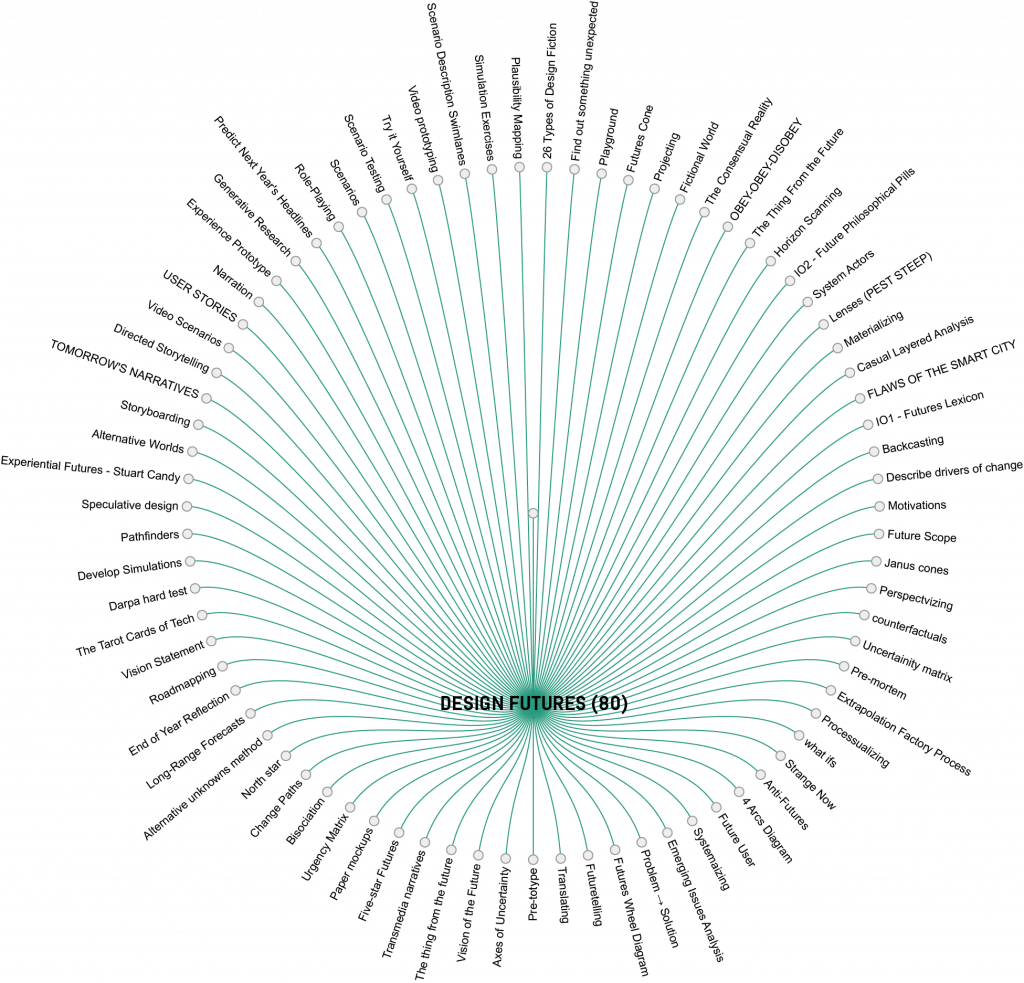
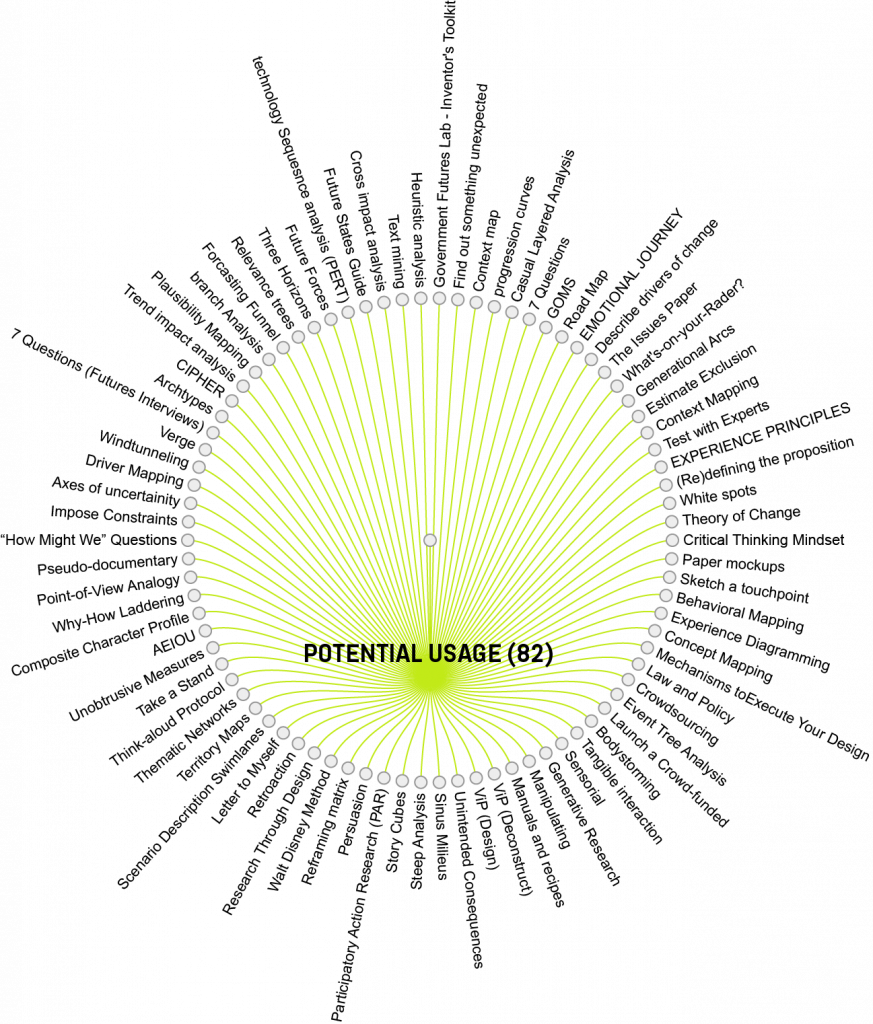
Design Futures Tools and Tools of Potential Usage in Design Futures
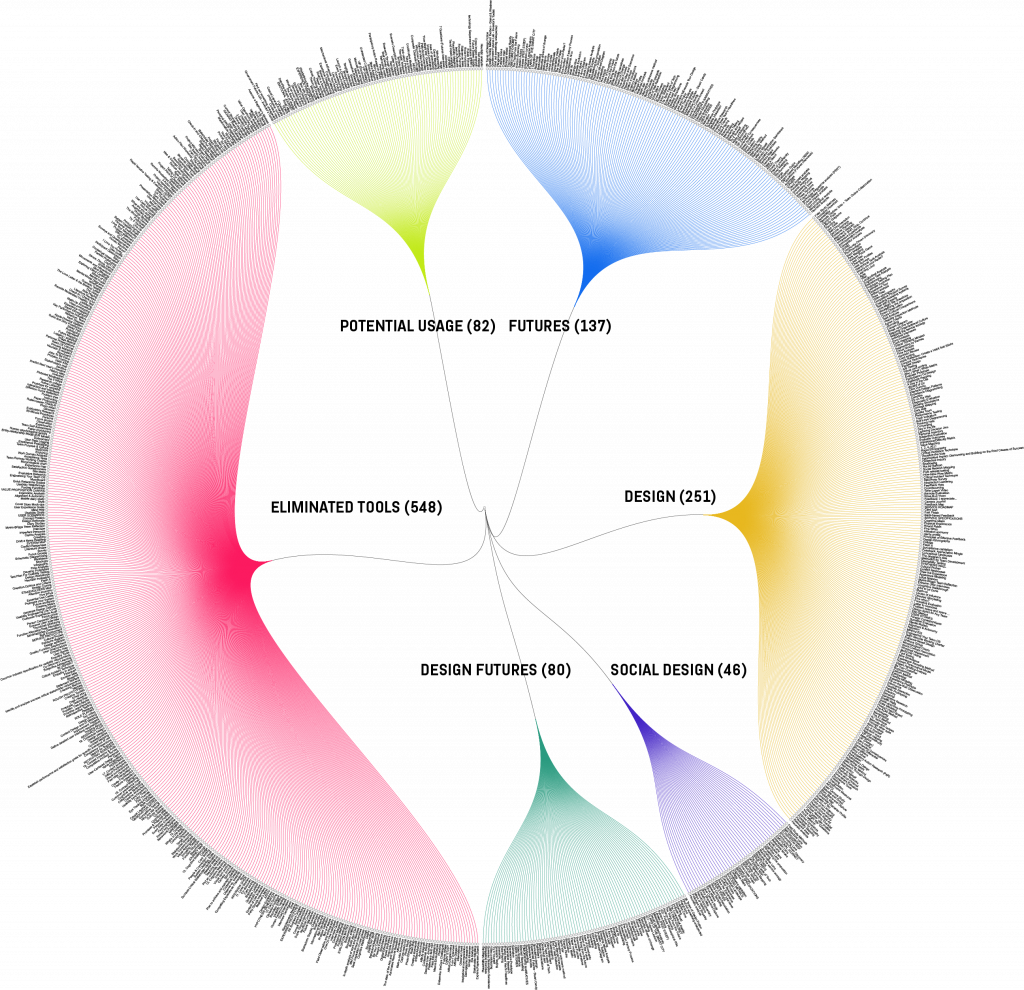
All tools and methods categorized
By doing the extensive research on methods collections and toolkits we were able to highlight the areas that formulate a gap where there is a space to create new tools to bridge these knowledge gaps. At the end of this research, we selected 15 tools, methods, devices or tactics to be included in the “Futures Design Toolkit”